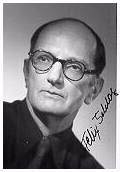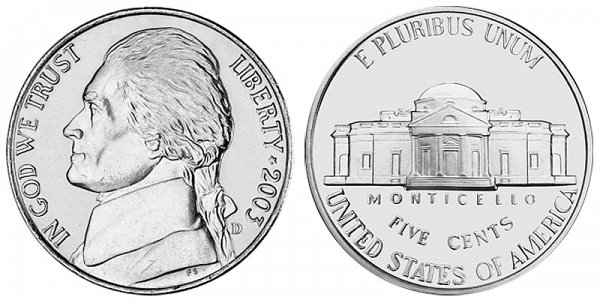Felix Schlag
US Coin Designer and Engraver - Jefferson Nickel
Felix Oscar Schlag was born on September 4, 1891 in the city of Frankfurt, Germany. His was raised by his parents Karl and Teresa Schlag and lived in Germany for a long period of time before immigrating to the United States. As Felix was growing up, he joined the German army as a teenager and fought during World War I. Schlag worked at many various jobs for short periods of time before the war and after the war. Not long after the war at the age of 29, he married a woman named Anna, who became his wife in 1920 and they had three children between 1920 and 1929.
During his time growing up in Germany, Felix Schlag exhibited a great talent for the arts and had become quite experienced throughout his childhood. In fact, he had already won many art competitions and contests in Europe. So he was already a successful artist at the time, working as a medalist, sculptor and designer. In 1929 at the age of 38, Felix and his family moved to the United States. One of his first jobs in the US was at General Motors, where he actually designed and stylized classic automobiles. Not long afterwards, he then moved to Chicago in the 1930s where he was commissioned to work on designing sculptures in prominent public locations inside the city.
In early 1938, the Treasury Department announced that it was holding a public competition to design the new US nickel. At the time, the law stated that coins could only be redesigned after a minimum of 25 years. The Buffalo Nickel had been in production since 1913, and since it was now 1938, a new nickel could be produced. The theme of the contest was to honor the 200th anniversary of the birth of Thomas Jefferson, which would be celebrated in 1943. The rules of the coin design competition stated that the new nickel would have an obverse that depicted a portrait of the 3rd US President Jefferson, while the reverse would be required to depict the Monticello, which was the home of Thomas Jefferson, located in Charlottesville. The contest had a $1,000 award that would be given to the winning artist.
Felix O. Schlag, along with 390 other contestants, submitted their designs to the Treasury for selection. On April 20, 1938, Nellie Tayloe Ross, the first female Director of the US Mint, along with the judges decided that Schlag's design was the most popular of them all and he ended up winning the contest, along with the $1,000 award. His original design included the portrait of Jefferson and stylized letters on the coin. The reverse of the coin depicted a side view of the Monticello. The portrait of Jefferson resembles the bust of Jefferson sculpted by Jean-Antoine Houdon, the same bust that resides at the Boston Museum of Fine Art. The Federal Commission of Fine Arts did not accept the original design, which actually looks vastly different than the finalized design that we now know of.
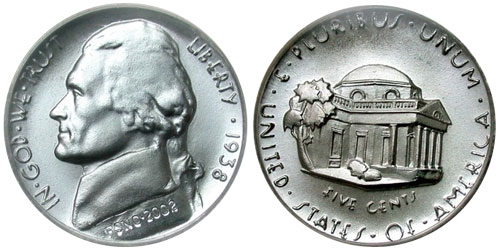
The winning original proposed design of Felix Schlag's Jefferson Nickel.
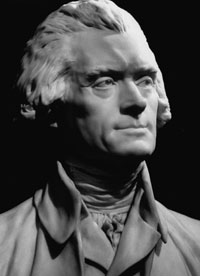
Bust of Jefferson sculpted by Jean-Antoine Houdon. Resembles Felix Schlag's portrait of Jefferson on the Jefferson Nickel.
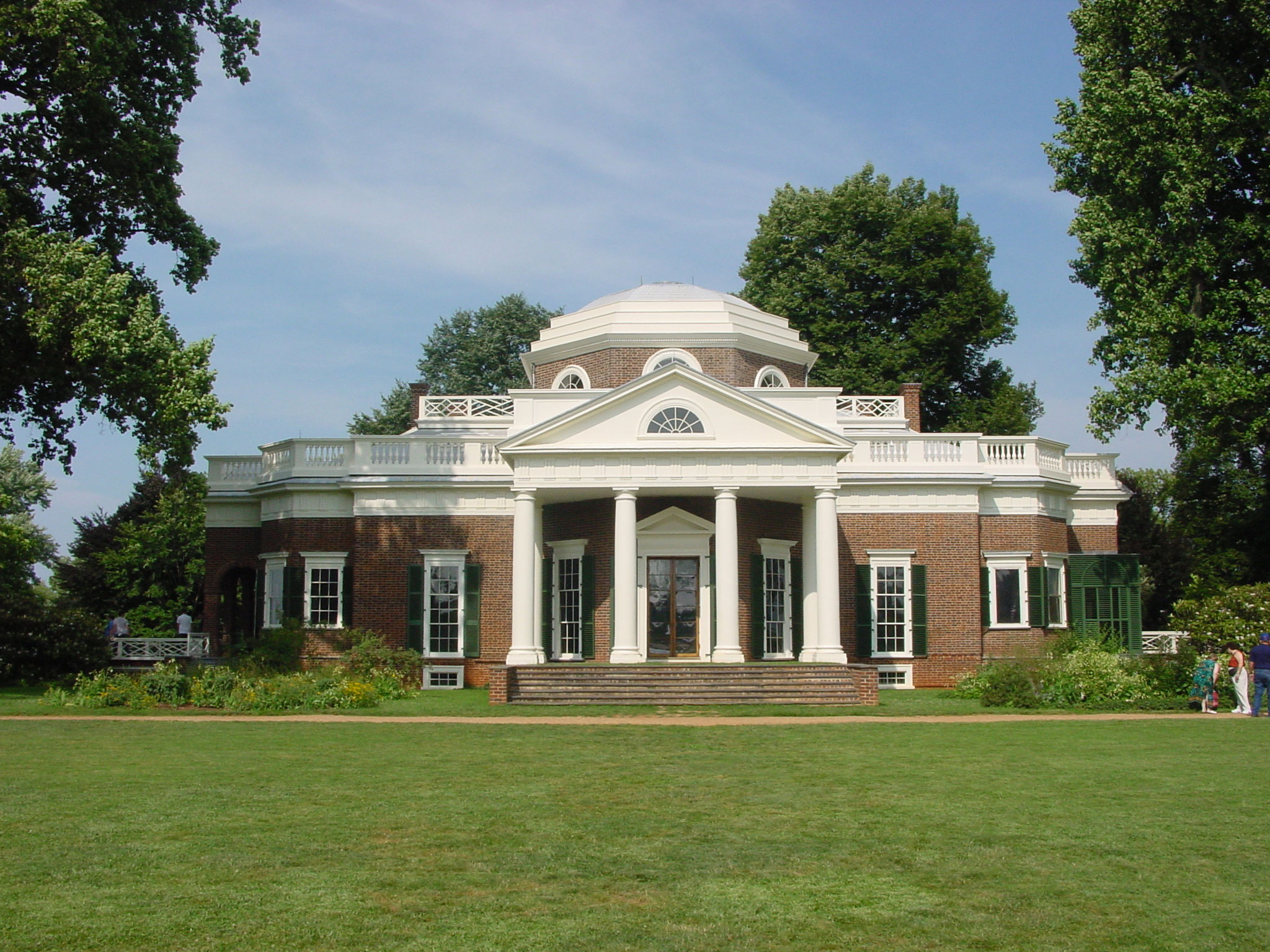
Photo of Jefferson's actual Monticello home, the same building depicted on the Jefferson Nickel.
Before the new nickel was produced, Felix was requested to redesign the nickel some more. Some critics did not approve the stylized lettering on both sides of the coin and felt that the letters should be more formal. Much of the criticism involved the angle of view of the original Monticello depicted on the back of the nickel. So Schlag redesigned the lettering and designed a front view of the Monticello, which looked more proportional and even compared to the original design. Felix explained that the front of the structure included a small tree and so he chose a three-quarter view of the Monticello instead, although he heard later that President Roosevelt also wanted a front view of the building. Even the portrait of Jefferson was slightly modified in the end.
Schlag's total revision of his original winning coin design was accepted in July of 1938. The motto "IN GOD WE TRUST" was still included on the front along with the words "LIBERTY" above the date around the rim of the coin. The reverse featured the words "E PLURIBUS UNUM" above the building and the words "MONTICELLO", "FIVE CENTS", and "UNITED STATES OF AMERICA" below the building. It's interesting to note that the words "MONTICELLO" were included because some people didn't know what the building was being depicted. Some people originally thought the building was Fort Knox or a public library. The Numismatist stated that the new changes to the coin were quite an improvement, although Schlag did not agree with this. The first nickels were produced in September and the very first Jefferson Nickels were released into general circulation on November 15, 1938.
As soon as the coin was released in 1938, many coin collectors began hoarding them well into 1939. The unusual hoarding was due to a false rumor that these new nickels were going to be discontinued after 2 years and redesigned again. So it took a long time for people to find their first Jefferson Nickel in their pocket change, even though they were not very rare and many of them were produced by the mints. Felix Schlag commemorated the production and circulation of his nickel design in 1939. He was able to obtain 150 proof 1938 Jefferson nickels, which were then mounted in plaques. The limited edition plaques were serialized and contained notarized certificates of authenticity and photos depicting the original models used. These are highly collectible and valuable pieces in the numismatic and historical fields, and they do not appear at auctions very often.
Meanwhile, Felix Schlag experienced a few major life events that year. When the new nickel was being struck in 1938, he finally became a US citizen that very same year. Although tragically, his wife Anna Schlag passed away around the same time. Felix had won a $1,000 award for his winning design and sadly had to spend his prize money for his wife's funeral.
On November 22, 1940 in Grand Rapids, Michigan, Felix married Ethel Levin, who was a local teacher. Both of them later moved to Owosso, Michigan during World War II. Felix and Ethel Schlag both settled down there for the rest of their lives. While the second world war was raging, the metal composition of the Jefferson Nickel was changed in 1942. Nickel was a very strategic metal needed during the war and so was copper. The 75% copper, 25% nickel composition was changed to a 56% copper, 35% silver and 9% Manganese "war time" composition. These nickels became known as the silver alloy Wartime Nickels. Many base composition metals used in US coins were replaced and used for the war effort. The pre-war metal composition was recontinued again in 1946 and is still used today.
Also during the war, production of proof Jefferson nickels ceased between 1943 and 1949. During and after the war, the demand for military medals took precedence. After a number of years, Felix Schlag eventually did get back into artwork again and opened a studio in photography. He continued his work into the 1960s when he got back into sculpting, modeling and designing medals once again. Around that same time, Felix Schalg was becoming a big name again among collectors. Many people requested autographs, which Schlag happily signed for $1.50. He also charged $5 to autograph a card that depicted his winning original nickel design. 400 of these cards were produced, but Schlag reported that the surge in autograph requests suddenly diminished and he did not sell all of his cards.
In 1966, 28 years after the nickel was produced, the US Mint honored Felix Schlag and engraved his initials "FS" on Jefferson's coat near the rim of the coin in small letters, which are easily viewable on the coins. The US government also struck two special coins and gave them to him as a commemorative gift. Felix's Jefferson Nickel was first produced in 1938 and continued all the way through 2003. Billions upon billions of these coins were ultimately produced over the decades.
Starting in 2004, the reverse of the nickel was changed in order to commemorate the 200th anniversary of the Lewis and Clark Expedition and Louisiana Purchase, which President Jefferson authorized during his term. These coins are included as part of the Westward Journey Nickel Series. In 2005, Schlag's obverse portrait of Jefferson was then changed. Then in 2006 and beyond, Schlag's Monticello was returned to the coin, but the obverse was changed permanently to a new portrait of Jefferson, designed by Jamie Franki. The new portrait of Jefferson depicts his full frontal view of his face.
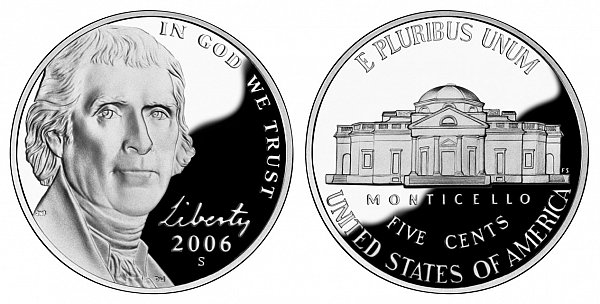
The new Jefferson Nickel design starting in 2006 through the present. Obverse portrait of Thomas Jefferson was redesigned by Jamie Franki, while the Felix Schlag's original Monticello reverse returns.
Felix Schlag passed away on March 9, 1974 at the age of 83. He was laid to rest in Owosso Michigan. Some years later, a granite grave stone was added to the site and depicts Schlag's original obverse and reverse of the Jefferson Nickel that he produced. Near the end of his life, Felix Schlag was quoted saying: "Americas got its nickel's worth out of me, wouldn't you agree?".
More information and sources about Felix Schlag can be found at: http://www.felixschlag.com/
